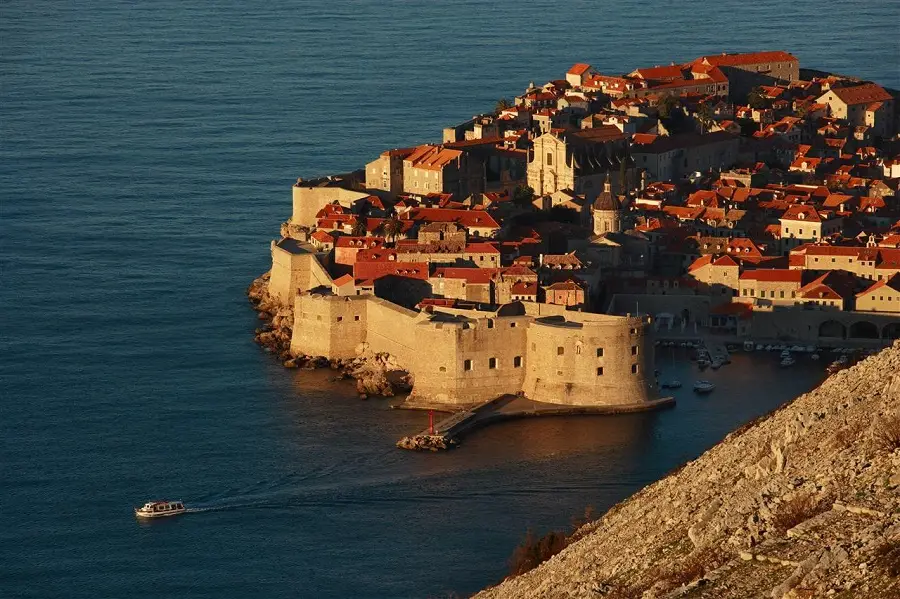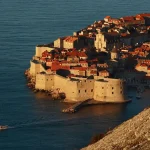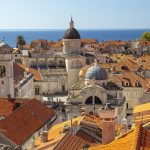
Last updated on August 21, 2020 – The speculations have proven to be correct this time, as it was announced tonight that Croatia has lost their position on the UK list of safe countries.
Grant Shapps, UK Secretary of State for Transport has announced on his Twitter profile tonight:
Data shows we need to remove Croatia, Austria and Trinidad & Tobago from our list of #coronavirus Travel Corridors to keep infection rates DOWN. If you arrive in the UK after 0400 Saturday from these destinations, you will need to self-isolate for 14 days.
— Rt Hon Grant Shapps MP (@grantshapps) August 20, 2020
The decision means that those arriving from Croatia to the United Kingdom are subject to a 14-day mandatory quarantine. Many popular tourism countries for the UK market are not on the list of safe countries (the UK officially calls it the Travel Corridors list), including Spain, Bulgaria, the Netherlands, France, Tunisia, Bulgaria, Belgium, and the USA. Portugal was added to the Travel Corridors country today, when Croatia, Austria and Trinidad and Tobago were removed. The travelers have until early Saturday morning to return without having to quarantine.
This move was all but confirmed on BBC Breakfast television this morning when respected travel guru said that Croatia would be taken off the list tonight, a decision which will probably be announced by the government tweet about 22:00.
This is how the numbers are being reported in charts in Britain’s biggest tabloid, The Sun.
Paul Charles, the CEO of the travel consultancy PC Agency, told The Guardian that he believed there were about 20,000 British tourists currently in Croatia, while aviation data analysts Cirum say that there are some 767 flights to Croatia scheduled from now until the end of September from the UK to Croatia, with a seat capacity of 130,000.
In an exclusive in The Daily Telegraph, a tight deadline from announcement to implementation will result in plenty of stress for those currently in Croatia and not able to take time off from work for enforced quarantine:
“Croatia’s exclusion, due to be announced on Thursday afternoon, is expected to prompt an exodus of holidaymakers seeking to beat the deadline for having to quarantine, which is expected to be fixed as 4am on Saturday morning.”
A similar announcement for France last week brought a lot of holidaymakers home before the 4am deadline. In Croatia’s case, the majority of British tourists arrive by air, and flight capacity will be limited.
There are many who argue that there should not be a tourist season at all in a pandemic, and there are valid arguments for this. With an economy more than 20% dependent on tourism, however, Croatia decided to open up to tourism after a very successful and internationally praised initial response to the virus.
If, as seems likely, Croatia is added to the list along with Turkey, the calls for a regional approach to acting on these statistics will intensify. Two of Croatia’s most important tourism regions, Istria and Dubrovnik, have very low cases compared to the national average.
The decision is particularly crucial to Dubrovnik, which ironically is physically separated from the rest of Croatia until the completion of the Peljesac Bridge. Its location means that it is essentially an air and cruise ship destination, and that dependence has been brutally exposed during the corona era, with tourism traffic for the first half of 2020 just 12% of the corresponding period last year.
Dubrovnik’s dependence on tourism is much more concentrated than the rest of Croatia, with Mayor Mato Franković telling ABC News recently that it accounted for 80% of Dubrovnik’s economy. With its key markets from the UK, USA, and Asia, the lack of flights and zero cruise ships reduced traffic to a trickle. While this meant that the quality of life and ability to enjoy the old town like never before was widely appreciated, the lack of income due to no tourism is having a severe economic impact.
Dubrovnik County, most of which is physically separate from the rest of the country, currently has 30 active cases, of which 8 are in Dubrovnik itself. Since the first case in March, 227 cases have been recorded with 8 deaths. With the majority of arrivals coming by air, the majority of tourists will bypass Croatia completely.
Istria, which has a much more successful season due to its accessibility by road from a number of Western and Central European countries, currently has 24 active cases. Since the first case over 4 months ago, there have been 294 cases and 12 deaths on the Istrian peninsula.
The Croatian Tourism Association recently launched the Croatia COVID-19 website, to highlight the areas where the outbreaks were the most severe, as well as giving daily updates – see image above. Current individual hot spots are Split Dalmatia County and Zadar County, as well as Zagreb.
(These figures are a screenshot from the ECDC COVID-19 site)
Adriatic Luxury Hotels, the biggest employer in Dubrovnik, operate 8 hotels. Only last week, towards the middle of August, they opened the fifth of these, with the other three remaining closed for the season. After a very quiet start to the season, things picked up considerably in late July as more flights were added, and the Brits came in numbers. The UK market in Dubrovnik is the strongest this year, and one which is in danger of being taken away this week, despite the very low number of cases. The knock-on effect for the Dubrovnik economy will be severe.
Which countries have imposed quarantine restrictions on people returning from Croatia?
Should the UK remove Croatia from its list of safe countries, it will join a small but growing list of countries who are taking action in the response to the rise in cases.
Both Austria and Slovenia recently put Croatia on their red lists, Restrictions also apply with other countries, some of which are specific to Croatia’s situation, and some imposing restrictions on all arrivals. Countries where arrivals from Croatia have some form of quarantine/test upon entry are USA, Canada, Italy, Slovenia, Austria, Finland, Norway, the Netherlands, Latvia, Lithuania, Cyprus and Iceland. For more details on each country, check Quarantine & Testing Rules for Your Country After a Croatian Holiday.
What will be will be, but there are tense days ahead for the Croatian tourism industry in what has already been an incredibly stressful year. To find answers to some of the frequently asked questions by those interested in coming to Croatia, please read our frequently-updated FAQ article. To find out more about the options of getting tested in Croatia, read our article about testing locally. To find out more about testing internationally, before arriving in Croatia, we have an article helping you with that, too.
For the latest travel info, bookmark our main travel info article, which is updated daily.
Read the Croatian Travel Update in your language – now available in 24 languages!
Join the Total Croatia Travel INFO Viber community.











